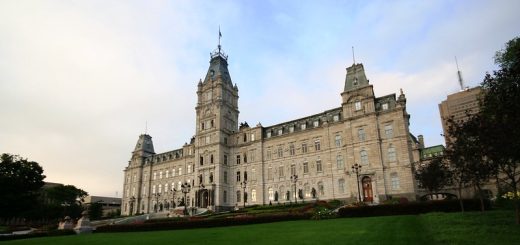DOMA Ruled Unconstitutional, Again
Up here in Canada, the issue of the legalization of same-sex marriage, with full benefits under provincial and federal laws, has been more or less a non-issue for quite some time now. Down south, however, the Defense of Marriage Act (“DOMA,” 1 U.S.C. §7, 28 U.S.C. 1738C), a controversial piece of legislation signed and ratified by the Clinton administration in 1996, is steadily and repeatedly being subjected to judicial scrutiny. In the latest blow to the Act, the US Federal Court of Appeals for the First Circuit has ruled DOMA to be unconstitutional, when pertaining to the rights of same-sex spouses being able to claim equal benefits under federal law— similar to their heterosexual counterparts. The decision, which consisted of the twin cases of the Commonwealth of Massachusetts v United States Department of Health and Human Services et. al. (“DHHS,” 10-2204) and Gill v Office of Personnel Management (“Gill,” 10-2207, 10-2214), ruled s. 3 of DOMA to be unconstitutional, hammering another nail into the Act’s overall validity.
Facts
The facts of both cases consisted of the denial of federally granted benefits to same-sex spouses of each of the plaintiffs. In Gill, the case revolved around seven same-sex couples who were married in Massachusetts. The action was brought because the surviving spouses of three of the couples were being denied federally-granted benefits, which were readily available to opposite-sex couples. In DHHS, the point of contention revolved around whether DOMA could revoke the funding for programs that were federally-mandated, if the programs were also open to same-sex couples. Both cases dealt with the state of Massachusetts, which legalized same-sex marriage in 2004. Massachusetts also provides equal benefits for spouses, much like heterosexual couples who are residents of the state.
Analysis
The Court brought up several interesting issues in its scrutiny of s. 3 of DOMA. Stating that the cases did not ask for a legalization of same-sex marriage, and therefore, that this question would not be dealt with, the Court instead focused on the analytical approaches that could be adopted to best fit the cases at hand. While acknowledging, for instance, that “[a]s with the women, the poor and the mentally impaired, gays and lesbians have long been the subject of discrimination,” (at pg. 18), the Court also refused to apply the “suspect classification” test in American jurisprudence. This test is traditionally applied in claims of equal protection where the group asking for protection from the alleged harm might be the subject of discrimination. Scholars have recognized the lesbian, gay, bisexual, transsexual, transgender, two-spirit, intersex and queer (LGBTTTIQ) communities to exhibit the criteria necessary for such protection.
In any case, the Court decided to proceed along the lines of precedent, leaving the decision to create a new suspect or quasi-suspect classification to the US Supreme Court, where the case will no doubt be heard next. In refusing to extend “intermediate scrutiny to sexual preference classifications” (at pg.14), the Court considered whether the economic justifications put forward by Congress were legitimate— that recognizing same-sex couples under DOMA would increase social security payments. However, in its eventual ruling, it conceded that the Act was a thinly-veiled justification for the moral disapproval of homosexuality – something that was beyond the powers of federal law. This factor was an important one in the court’s decision to ultimately deem s.3 of DOMA unconstitutional.
The Court then turned the argument of the Act’s supporters that DOMA stood for the legalized definition of marriage on its head, by deeming that Congress could not have decided on a “sweeping” definition for the term. Congress’ past practice has been to limit the definitions within a narrow range of factors, such as the group of people to whom the legislation includes. Therefore, the Court rejected the moralistic angle behind DOMA once again.
Addressing the concern that an unconstitutionality ruling could force states that do not want to legalize same-sex marriage to do so, the Court pointed to the fact that the issue at hand was about equal benefits to same-sex spouses at a federal level. However, for these benefits to be granted or take effect, it would be up to the state legislatures to first grant same-sex couples the right to marry. Further, as far as the Court was concerned, the division of powers in the context of federalism would ensure that federal judges could not force states to legalize same-sex marriage; it would be an overreach on the part of the federal government to do so.
Finally, the Court turned to address four arguments that were put forward to uphold the constitutionality of DOMA. In addition to the points I have listed above, the Court recognized the underlying concern that some states were concerned with preserving the traditional framework in societies, which was based on heterosexual understandings of marriage, but that in recognizing a state’s freedom to do this, a reciprocal right to recognize the newer notion of the legalization of same-sex marriage must also be granted. In addressing the economic argument – namely that DOMA would help preserve “scarce government resources” (at pg. 25), the Court conceded this aspect to be true, but then weighed it against the protection of a disadvantaged group. Ultimately, it deemed the latter protection to carry more weight. And with respect to the question of child-rearing, the Court re-emphasized that the point of DOMA was to give equal economic benefits to partners of the same-sex, and therefore, since it did not question child-rearing within the context of heterosexual relationships, it could not be asked to do so in the context of homosexual ones either.
Questions and Implications
Needless to say, the implications of this ruling are many, as are the questions about the Court’s approach in the judgment. Why, for instance, did the Court decide to look to precedent after repeatedly emphasizing the fact that LGBTTTIQ groups have historically fallen within the criteria needed for “suspect” or “quasi-suspect” classification? Is the point to bring the Supreme Court’s attention to this fact, to lead to the possibility of this classification being granted at the next appeal? Also, why did the Court state that a case-by-case approach was appropriate here, in claims of same-sex benefits, in spite of the fact that the notion of equality, as defined in the US Constitution, is not to be decided on a case-by-case approach?
Finally, this ruling does not necessarily create any more equality for LGBTTTIQ groups, but simply disallows its deletion where it has already been granted. The pressing question for the Supreme Court will likely be to determine whether to tackle the bigger issue underneath, i.e. the “hostility to homosexuality,” (at pg. 25), or whether to grant rights in increments. Keep checking back at this blog for information on the almost-certain Supreme Court appeal, which is sure to change the course of US legal history.







Join the conversation